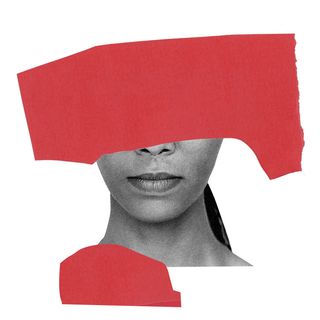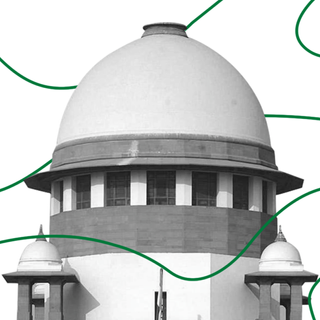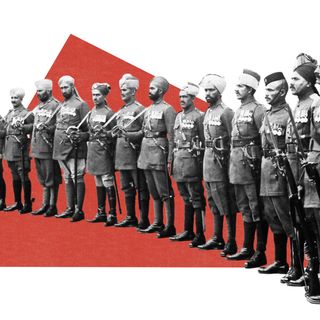
SC Tells Govt to Reconsider Vaccine Prices As Marginalized Groups “May Not Have Ability To Pay”
Vaccinations are a “valuable public good,” and the central government should ensure equitable delivery to Bahujans and others.

The Supreme Court has urged the central government to revisit its Covid19 vaccine policy, noting the current prices — which differ across the country — will create disparity and prevent vulnerable groups from accessing Covid19 vaccines. Other factors, such as private-sector competition and lack of pricing regulation, will also disrupt people’s right to public health, as mentioned in Article 21 of the Constitution, the court noted.
The bench, comprising Justices D.Y. Chandrachud, L. Nageswara Rao, and S. Ravindra Bhat, has asked the government to “consider revisiting its current vaccine policy to ensure that it withstands the scrutiny of Articles 14 and 21 of the Constitution of India.”
Articles 14 and 21 provide for equality before the law and right to life respectively. The SC order, which was released yesterday evening after a hearing on April 30, is significant in that it aims to protect the interests of beneficiaries from all socio-economic groups and to promote vaccine equity within India.
Under the current, criticized strategy, the central government will procure 50% of the vaccines produced in India, and the remaining will be purchased by state governments and private companies. The purchase price of the Covid19 vaccine is lower for the central government (Rs. 150) than it is for state governments. Experts have pointed out such different pricing will make the vaccine campaign vulnerable to the whims of the market and create vaccine inequity.
“It is likely that compelling the State Governments to negotiate with manufacturers on the ground of promoting competition and making it attractive for new vaccine manufacturers will result in a serious detriment to those in the age group of 18 to 44 years, who will be vaccinated by the State governments,” the bench said, noting that while the government continues to provide vaccines free of cost to people aged 45+, those in the 18-44 age bracket will suffer because of higher prices. “The social strata of this age group also comprises persons who are Bahujans or belong to other underprivileged and marginalized groups, like many in the other population age groups. They may not have ability to pay,” the court added.
Related on The Swaddle:
Effective Covid Vaccine Will Be Meaningless in India Without a Mass Immunization Strategy
Experts have noted that Dalits, Adivasis, Muslims, women, and other vulnerable groups have been hardest hit during the pandemic. “The experiences of different groups of people in the pandemic has been defined by their caste, class, religious and gender identities,” Oxfam India’s head, Amitabh Behar, told The Caravan. Calling the novel coronavirus the “inequality virus,” Behar noted that the government’s procurement prices in the first phase of the vaccination drive (Rs. 200 for Covishield and Rs. 295 per dose for Covaxin) “are prohibitive for the majority of India, given that casual workers earn less than Rs 150 per day.”
Under the current pricing system (phase 3 of the vaccination drive), one shot of Covishield costs Rs. 600 and that of Covaxin is priced at Rs. 1,200 for private hospitals. The state government may decide its own price, so the final cost of the vaccine will wary for people between the age group 18-45 years; but largely, those who without resources will be at a disadvantage.
“Without a commitment to free vaccination, we would see the majority of Indians missing out on the vaccine. Secondly, even after many years, we are not able to fulfill the basic health requirements for the marginalized communities, especially those living in hard-to-reach areas, which might be the case for vaccination as well,” Behar added.
In a hearing on April 30, the bench noted the policy for people between 18-44 years, which asks them to register online on Co-WIN, will exclude those who are illiterate and do not have access to the internet. A “rational” method, the SC suggests, would be for the central government to take charge of vaccine procurements and negotiate the prices beforehand, instead of leaving it to states to do so. “While procurement would be centralized, distribution of the vaccines across India within the States/UTs would be decentralized,” the bench noted. ‘’We cannot have a private sector model in a crisis of this magnitude. We have to follow the national immunization model. Don’t leave it to the manufacturers. How can private manufacturers ensure equity?” the bench said.
The Supreme Court directed the government to recalibrate its position on pricing while reviewing other Covid19-related issues. It asked the government to impose a ban on mass gatherings and superspreader events, in addition to considering a nationwide lockdown to address the spread. “Having said that, we are cognizant of the socio-economic impact of a lockdown, specifically on the marginalized communities. Thus, in case the measure of a lockdown is imposed, arrangements must be made beforehand to cater to the needs of these communities,” the court said.
The apex court also took stock of depleting resources within the health system. In a key order, it notified that no hospital will refuse admission or medicines to a patient and asked the government to come up with a comprehensive hospital admission policy, within two weeks, which can be followed by all state governments. Moreover, the government is advised to create a buffer stock of oxygen and distribute “emergency” supplies across the nation, which should be replenished each day to avoid shortage.
Yesterday, 12 Covid19 patients died in Delhi’s Batra Hospital because of a shortage of oxygen supply. Similar reports of deaths, along with fervent appeals of hospitals on social media for oxygen, underscore the scale and severity of India’s second Covid wave. As one media report notes, it is a “nightmare on repeat.”
Saumya Kalia is an Associate Editor at The Swaddle. Her journalism and writing explore issues of social justice, digital sub-cultures, media ecosystem, literature, and memory as they cut across socio-cultural periods. You can reach her at @Saumya_Kalia.
Related


SC Issues Guidelines for Courts to Consider Influence of Caste, Disability in Sexual Abuse Cases
